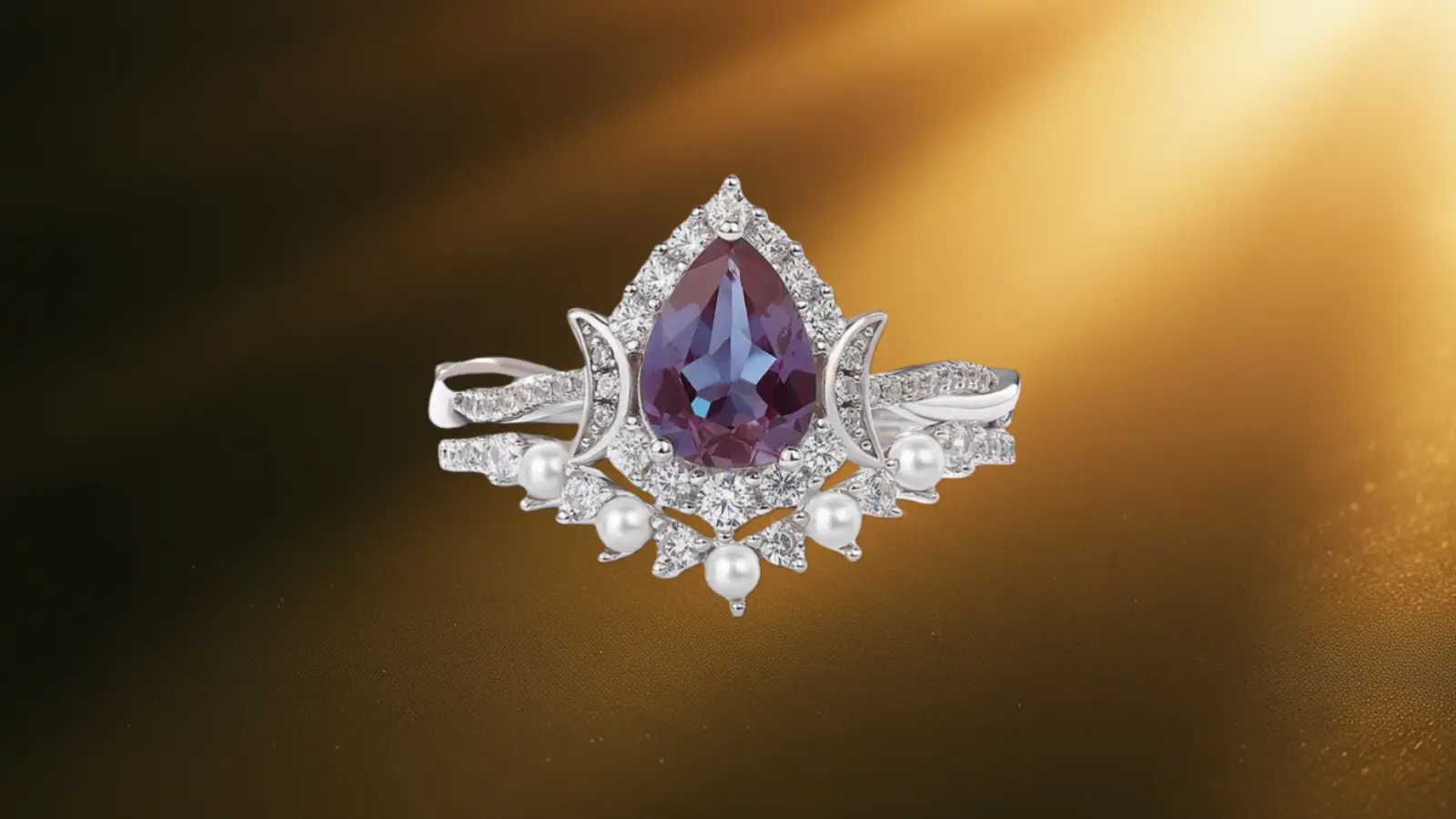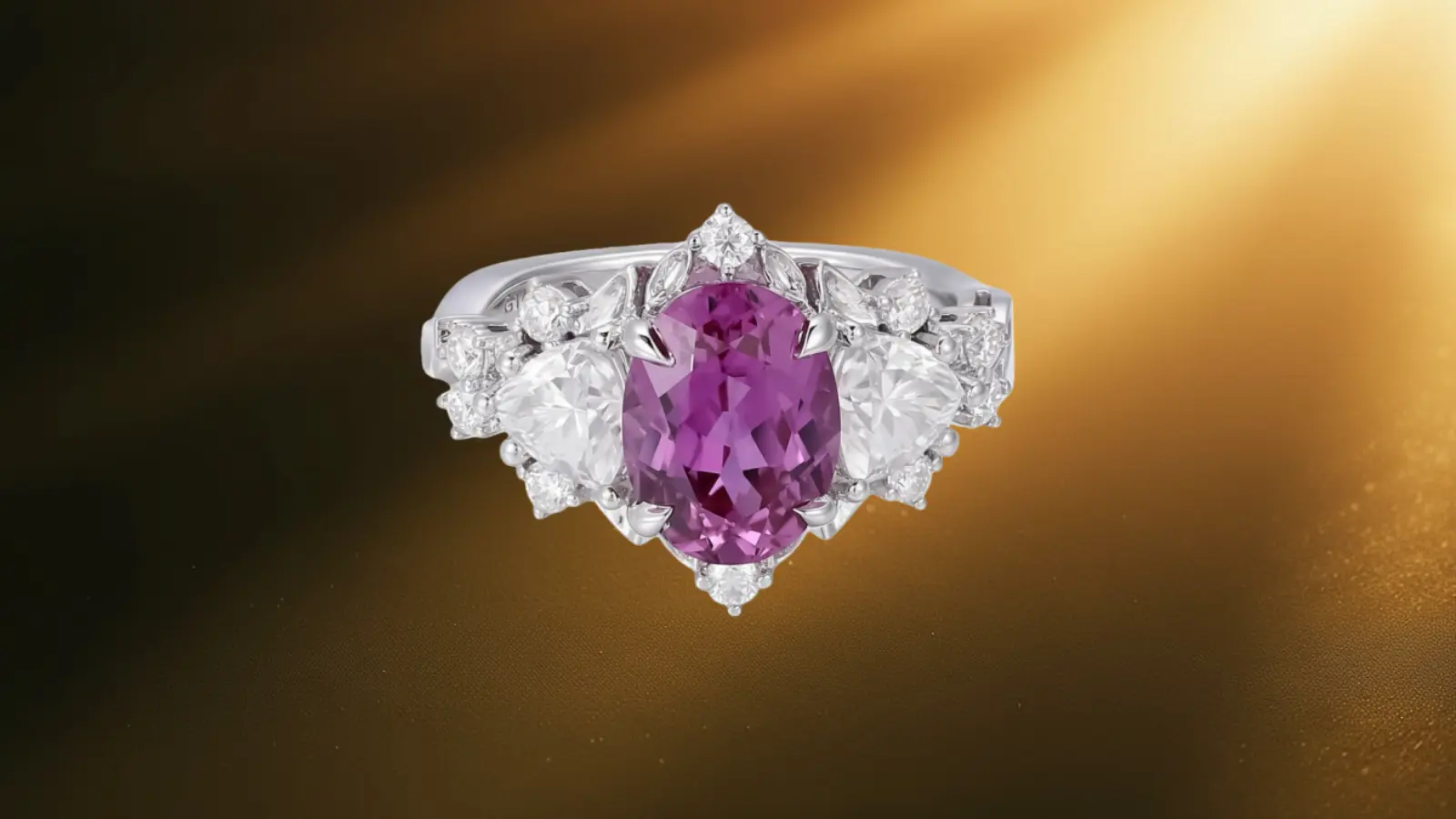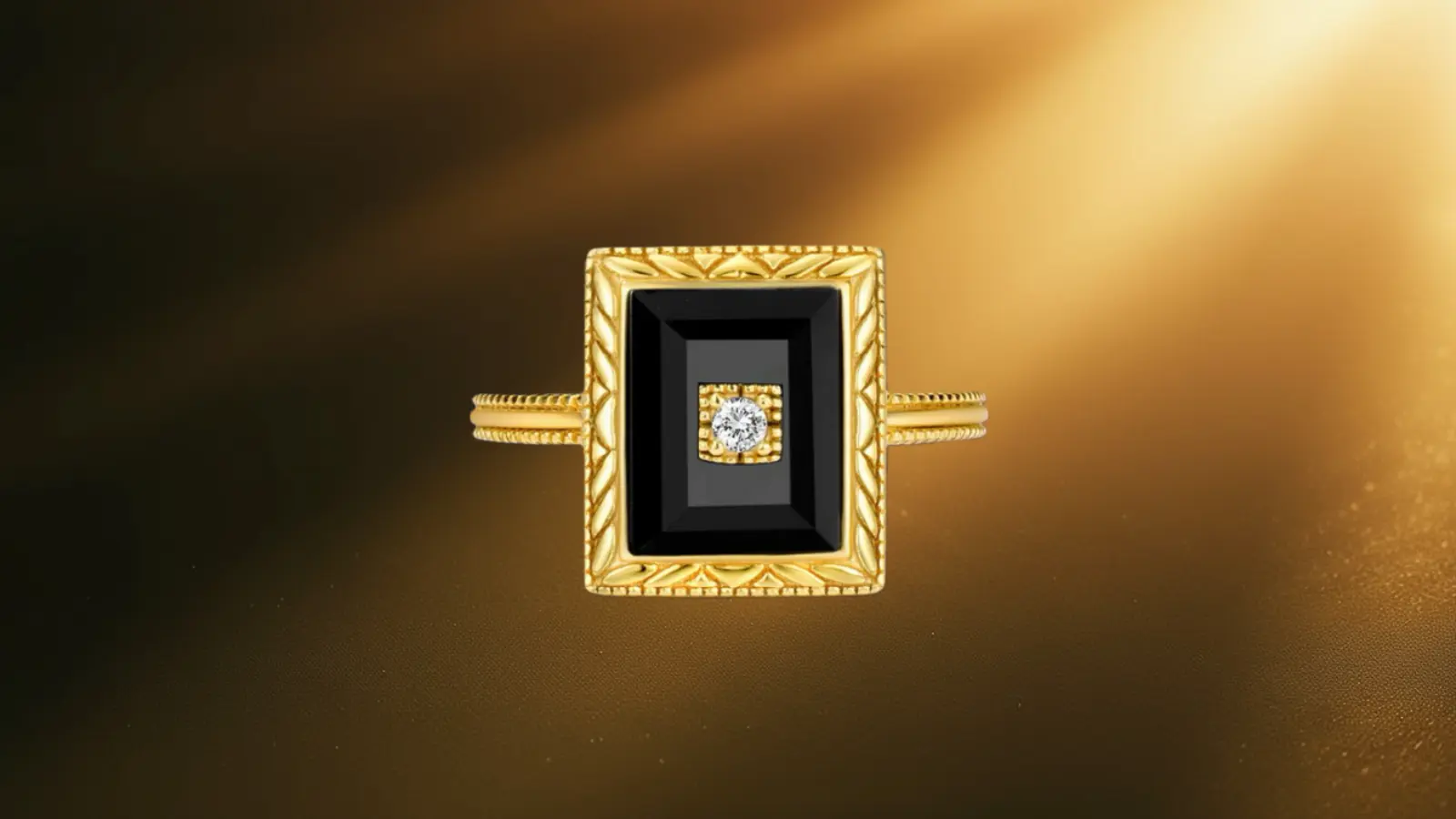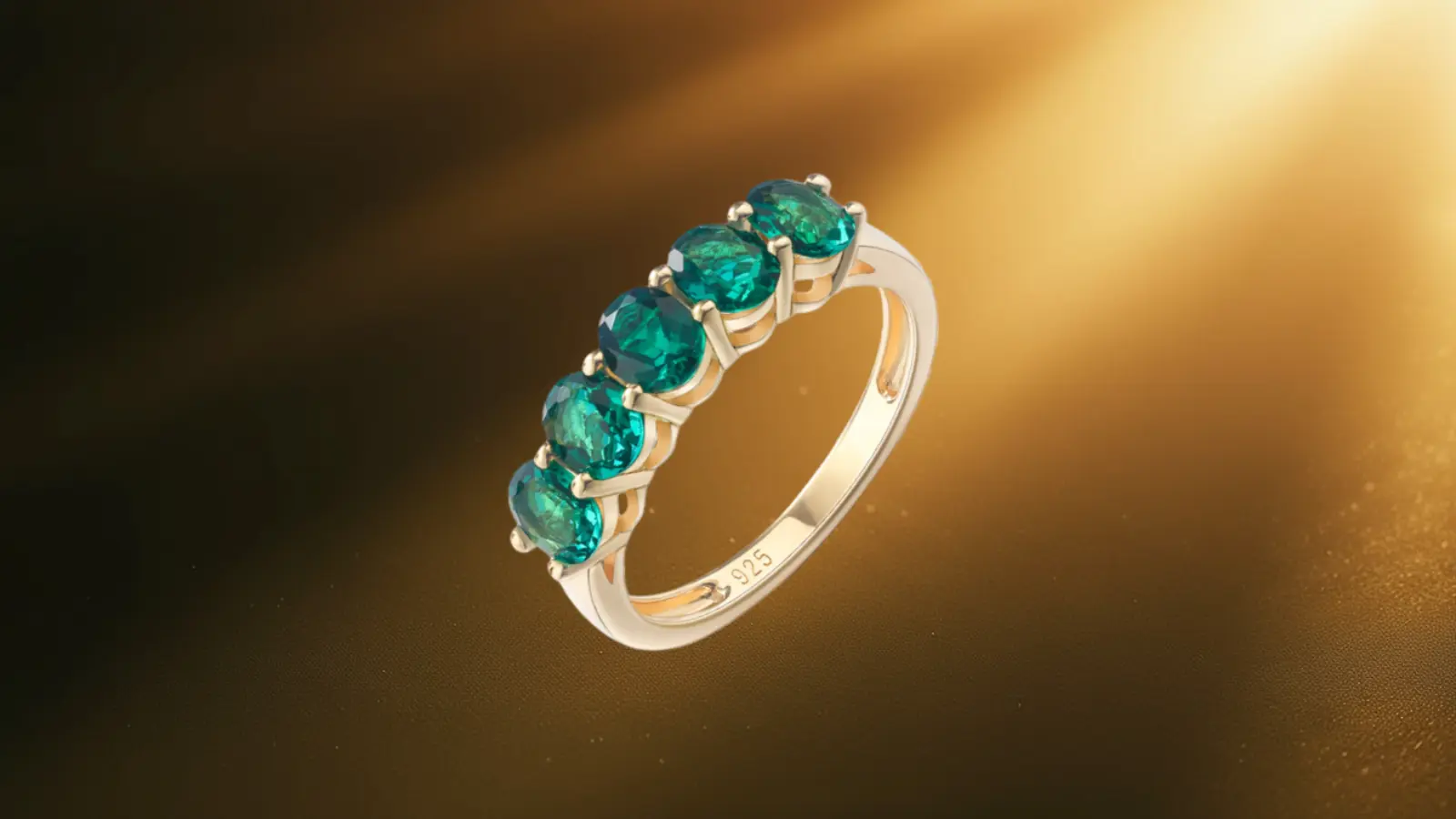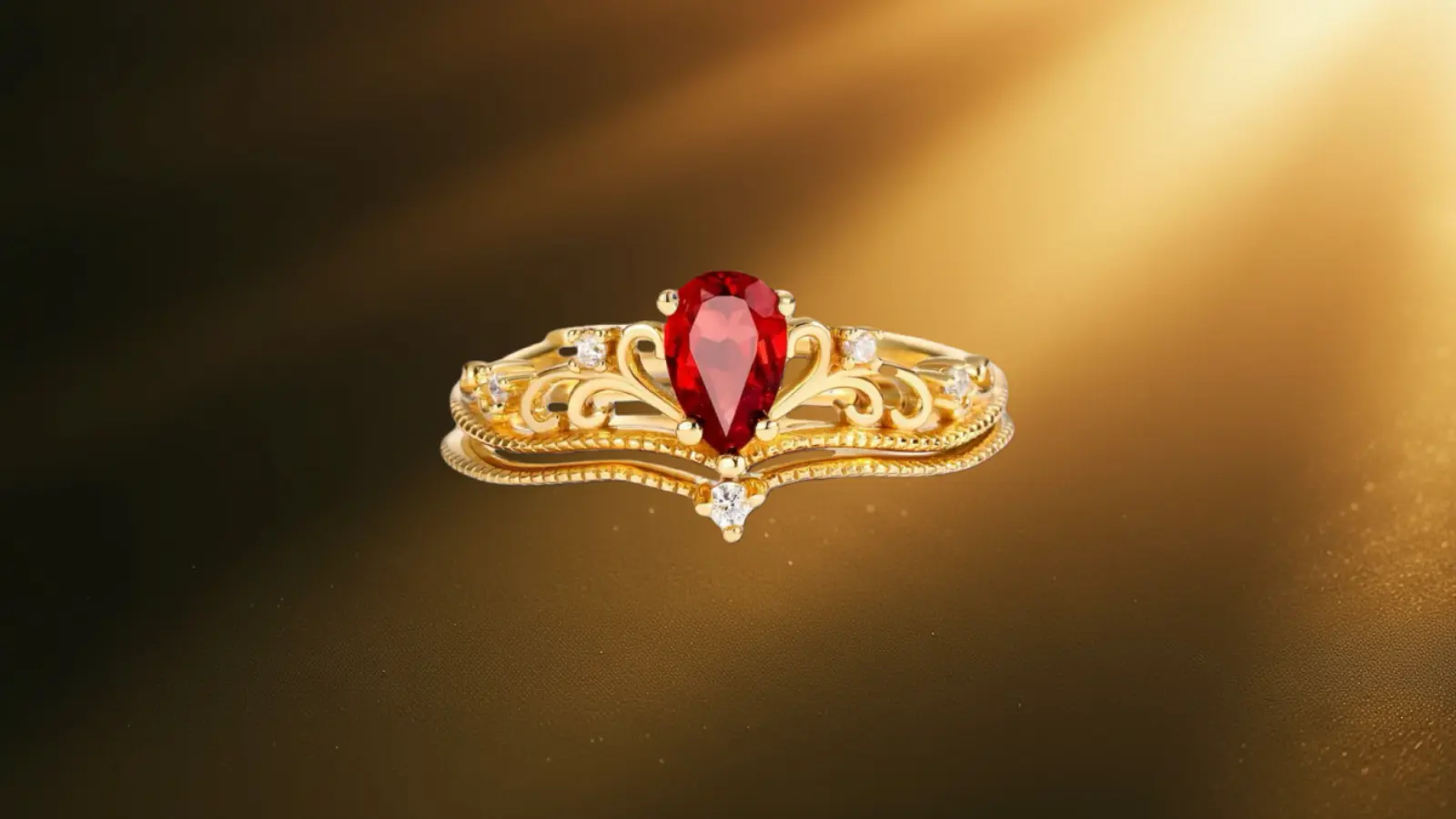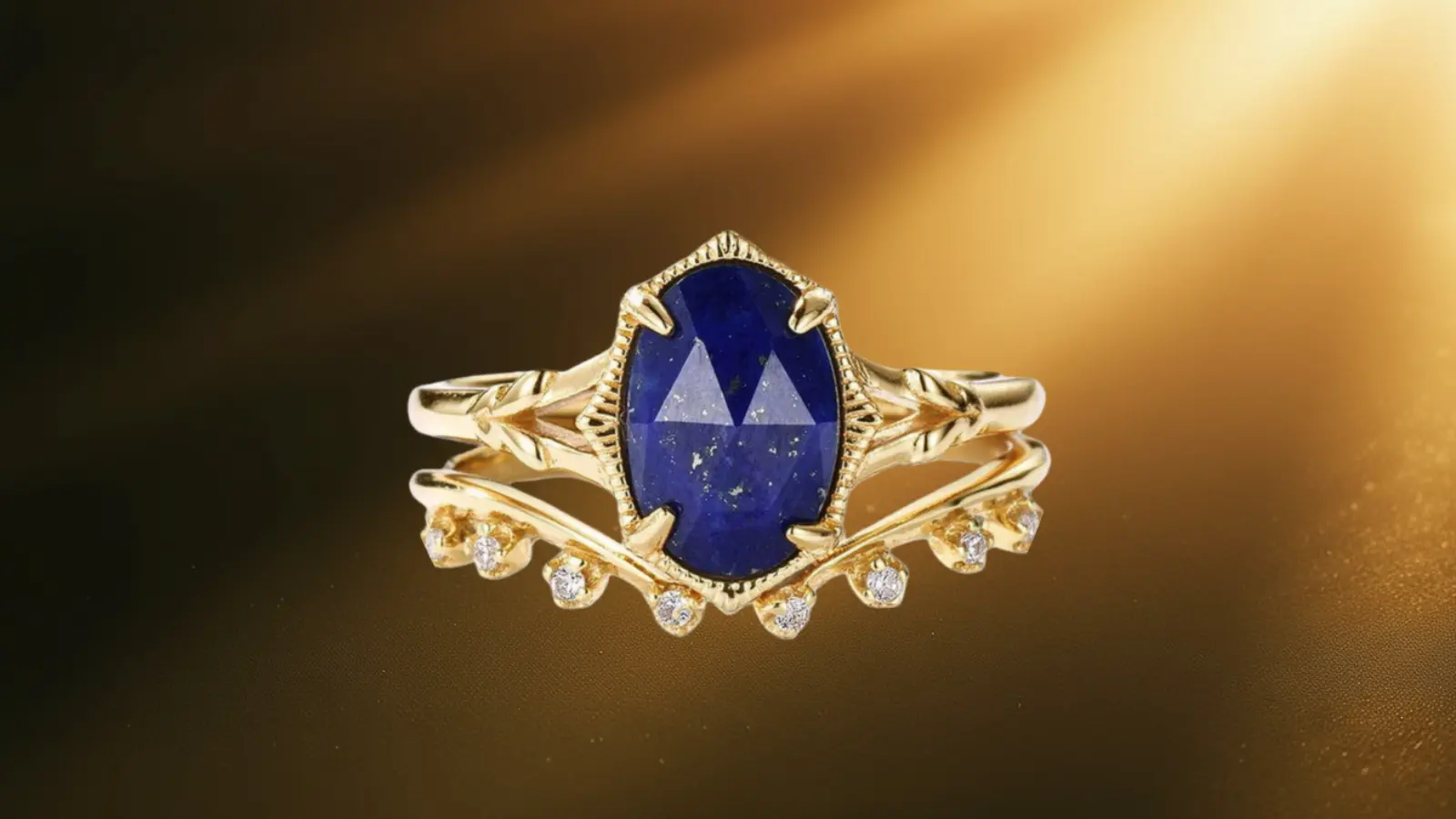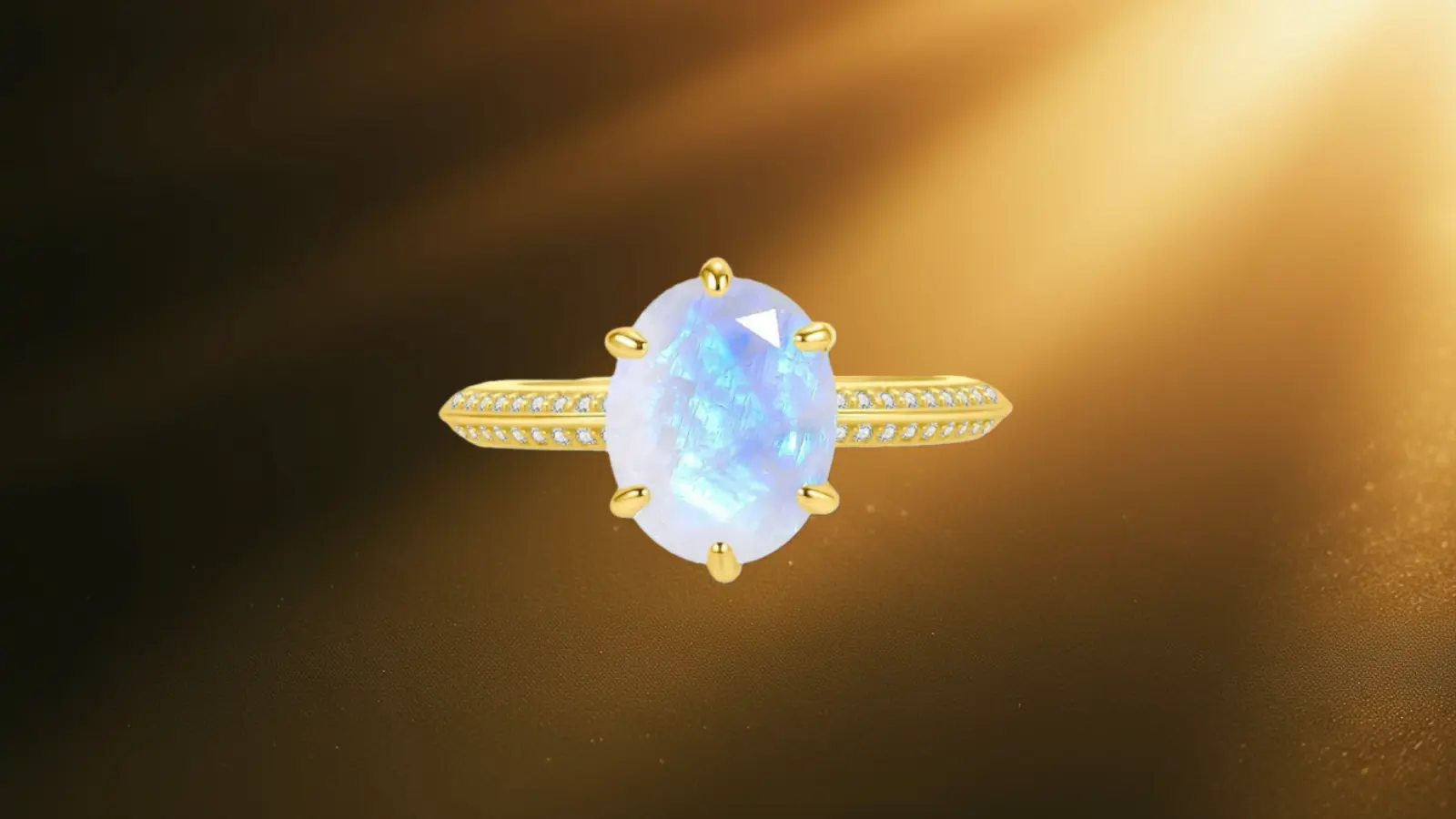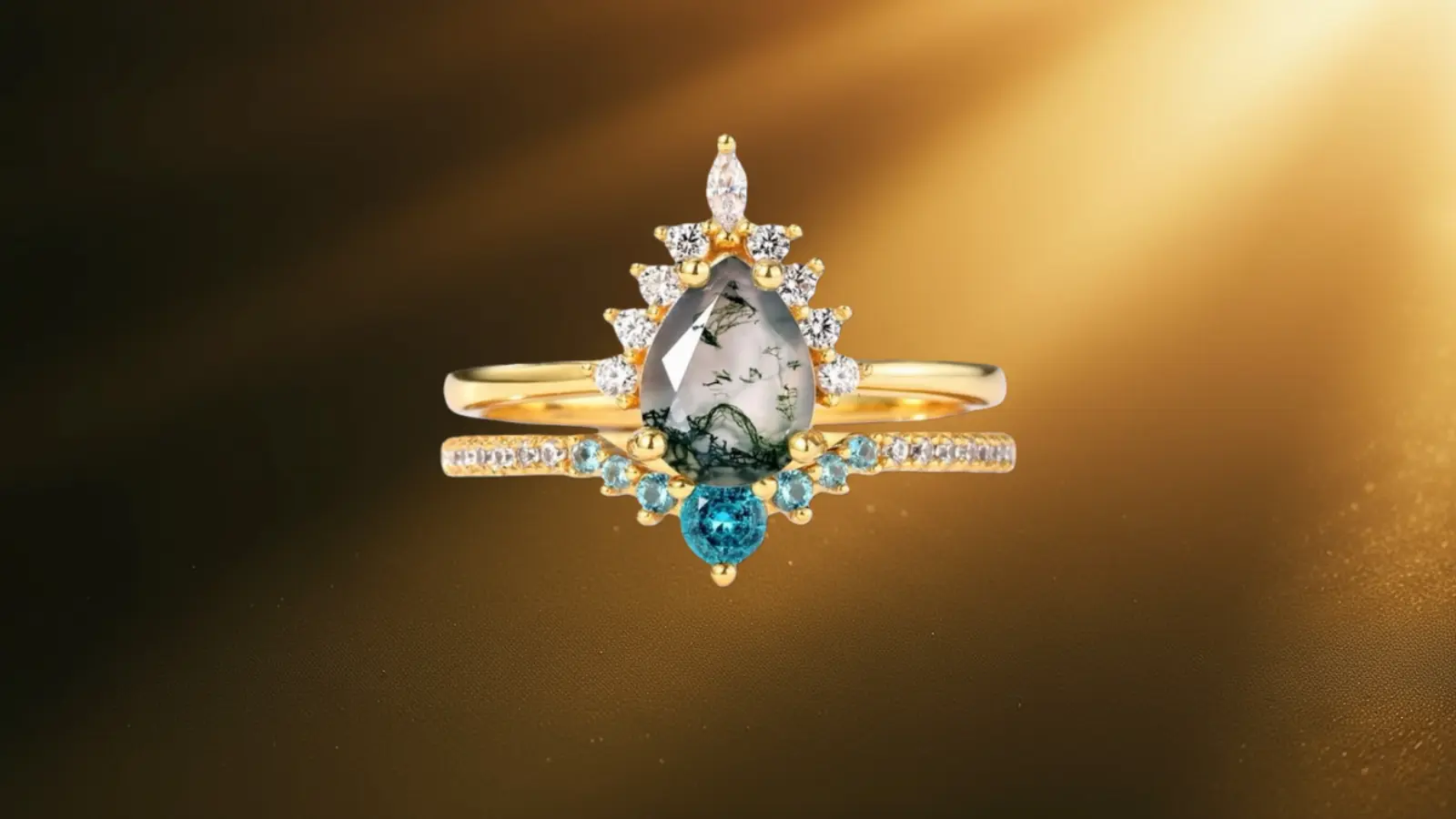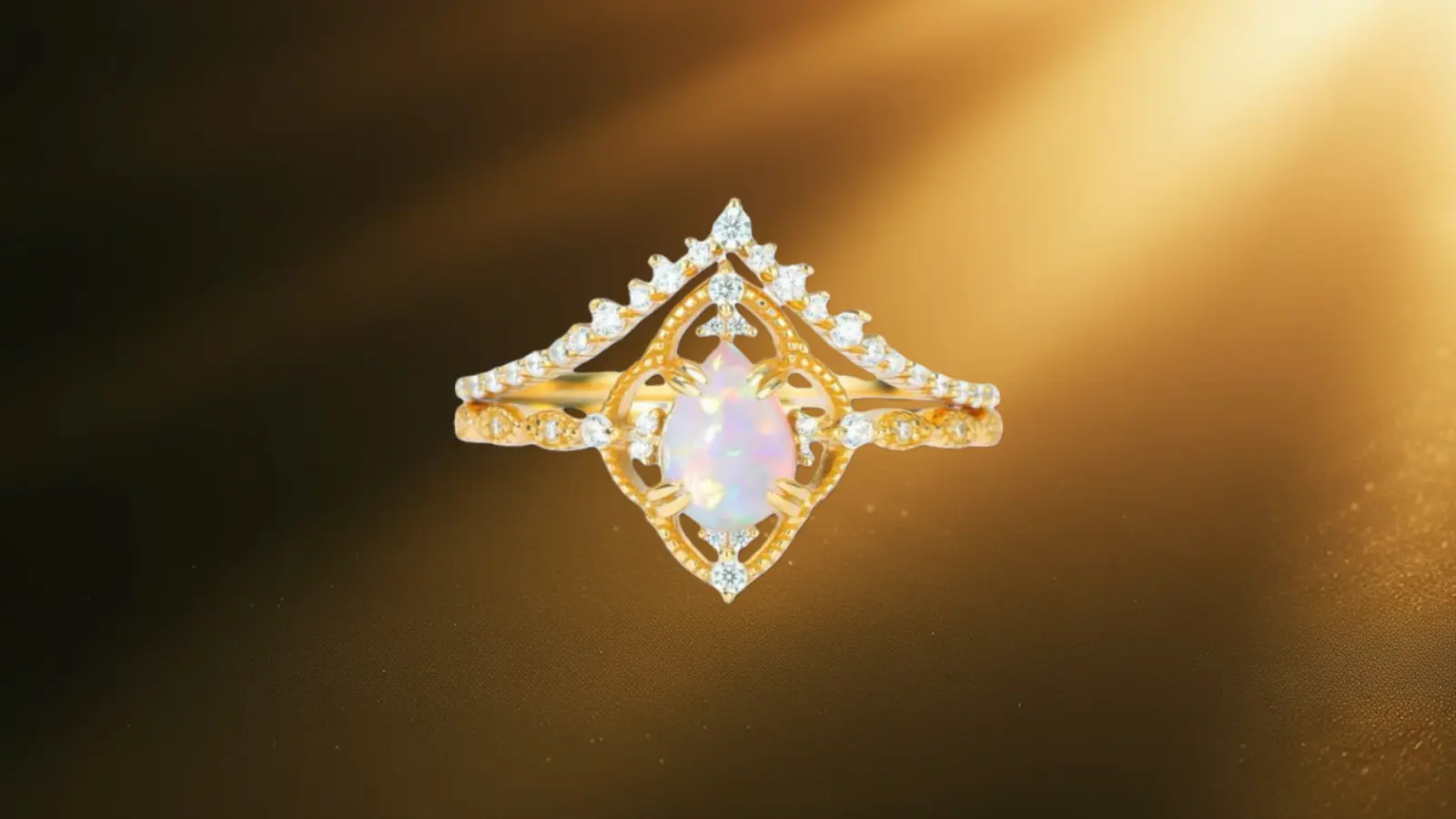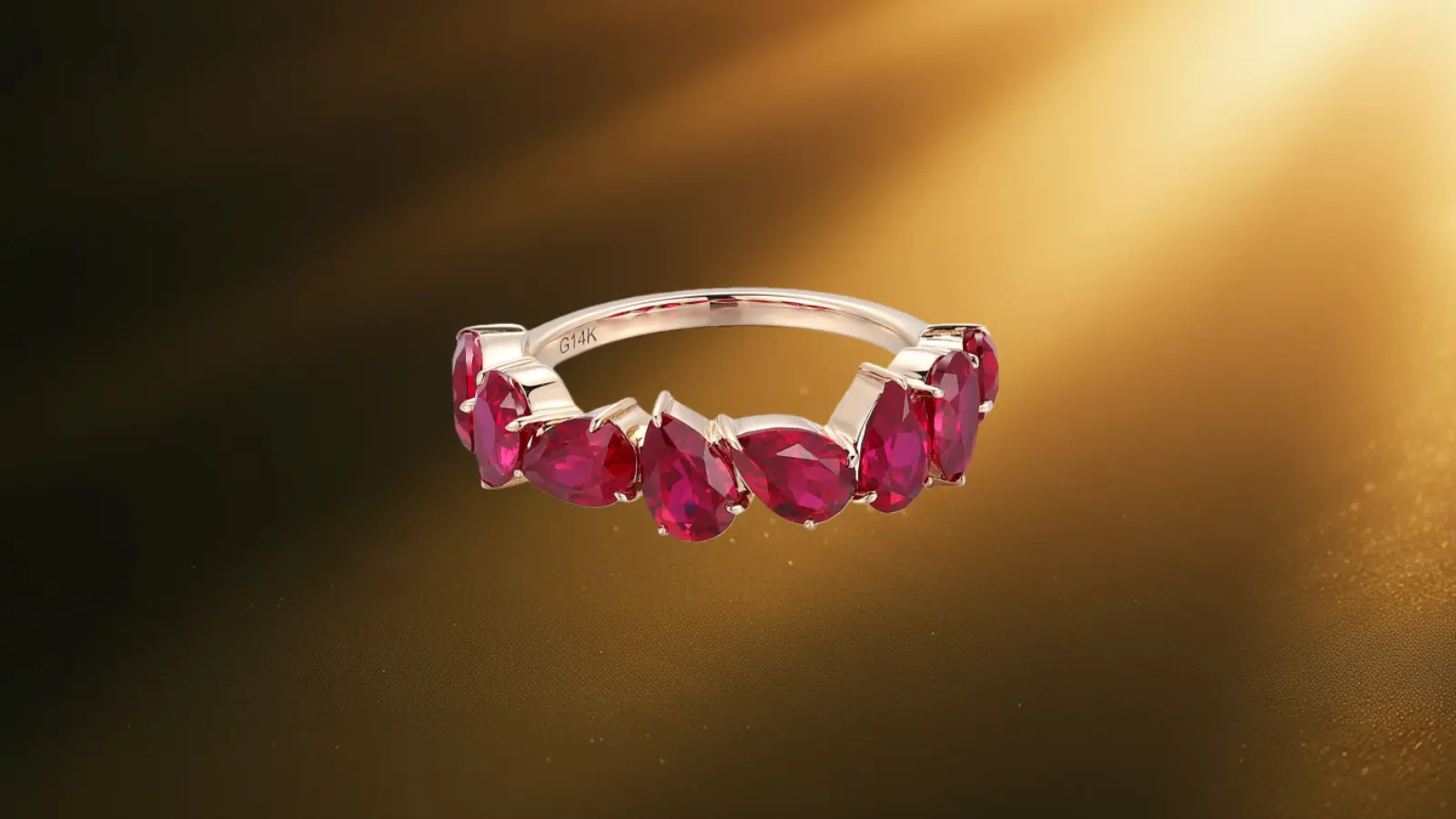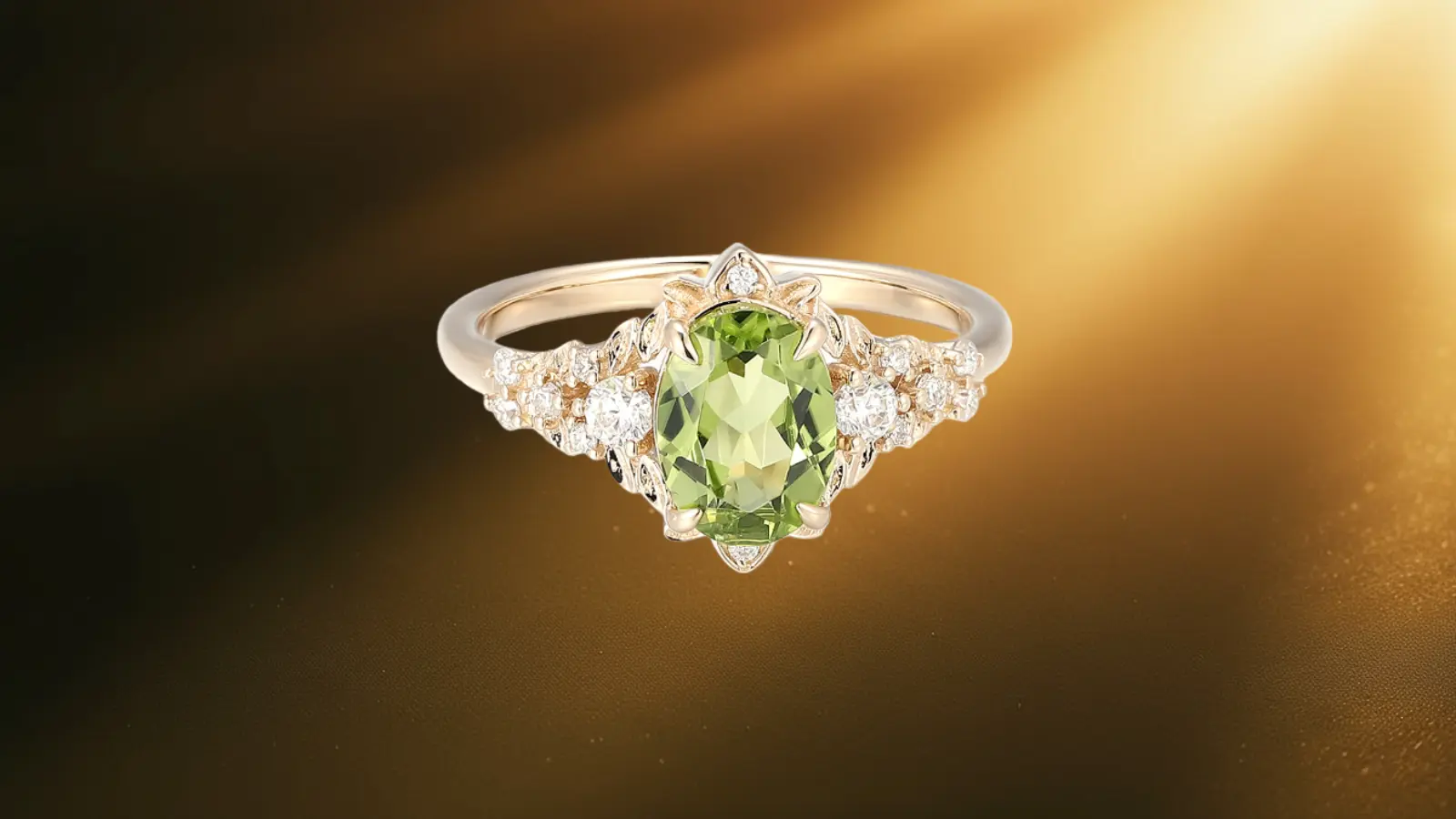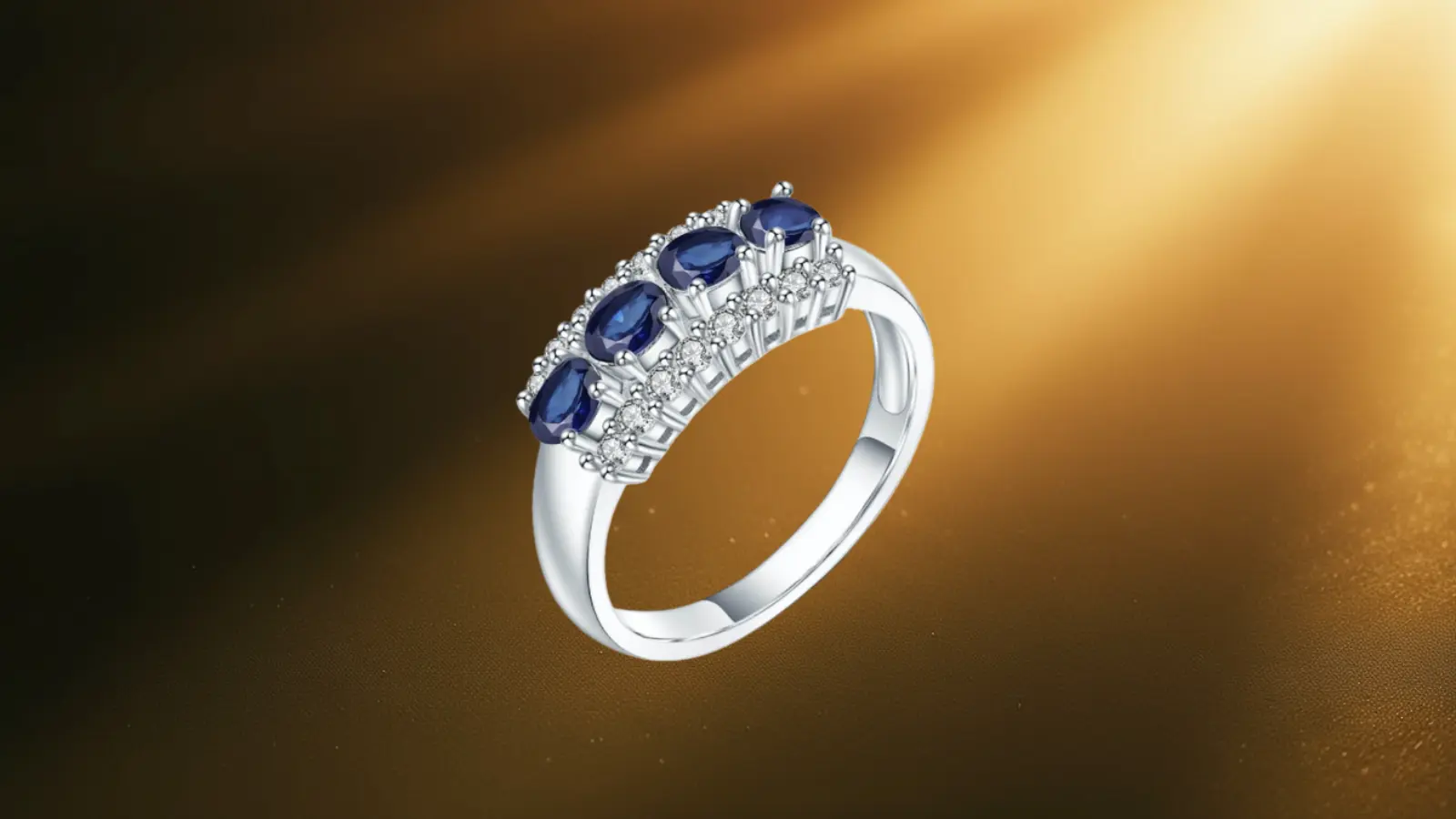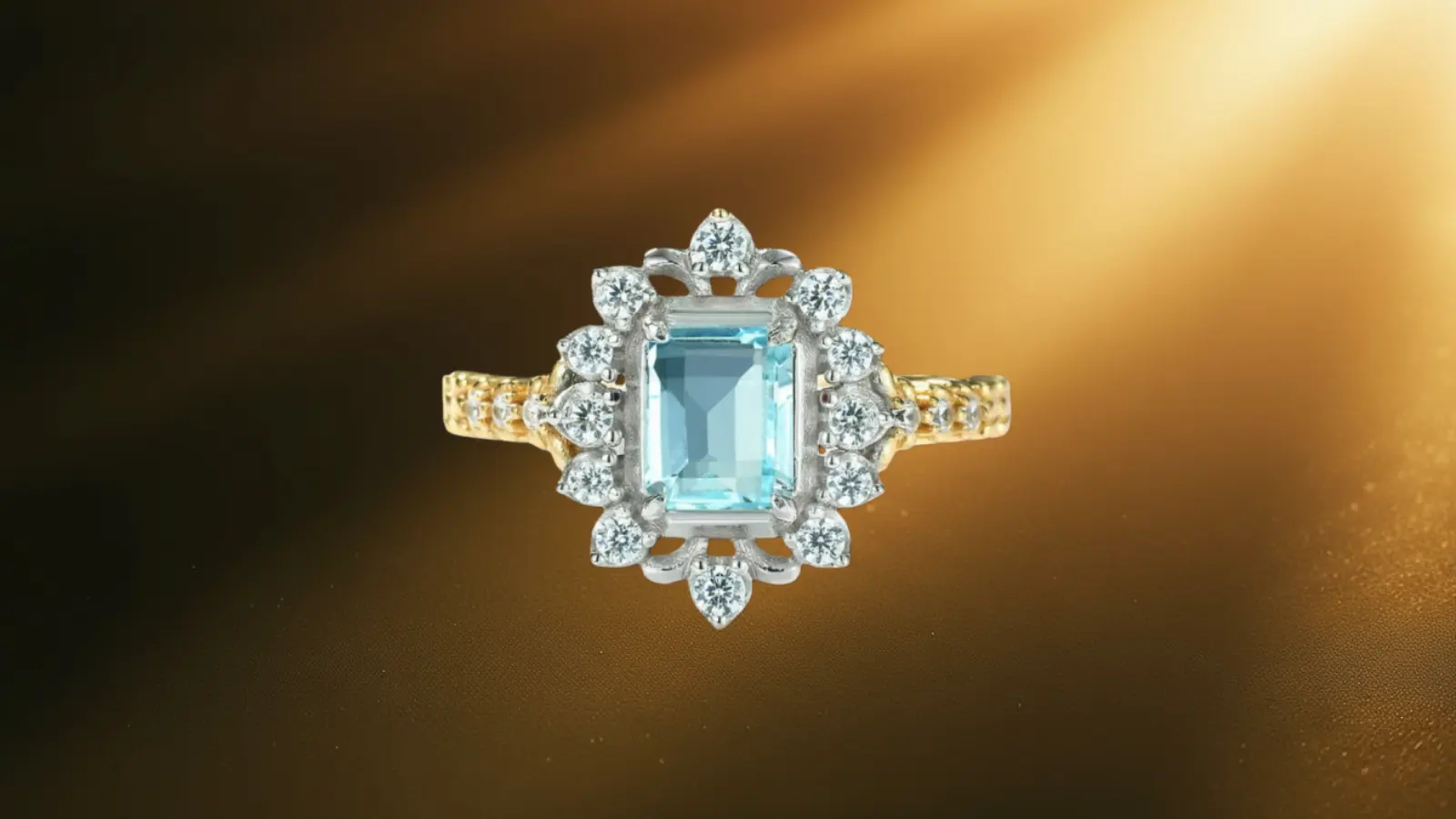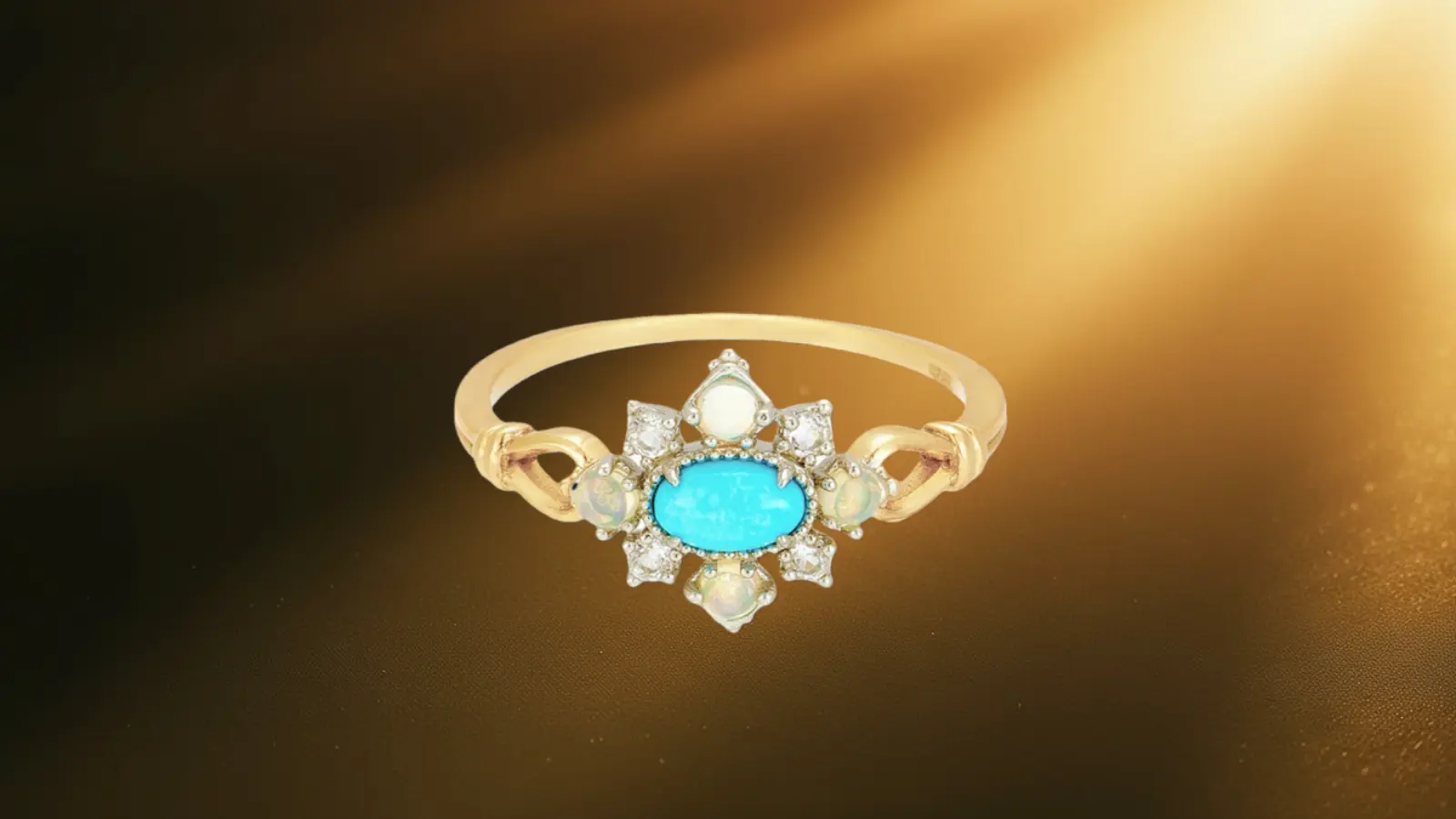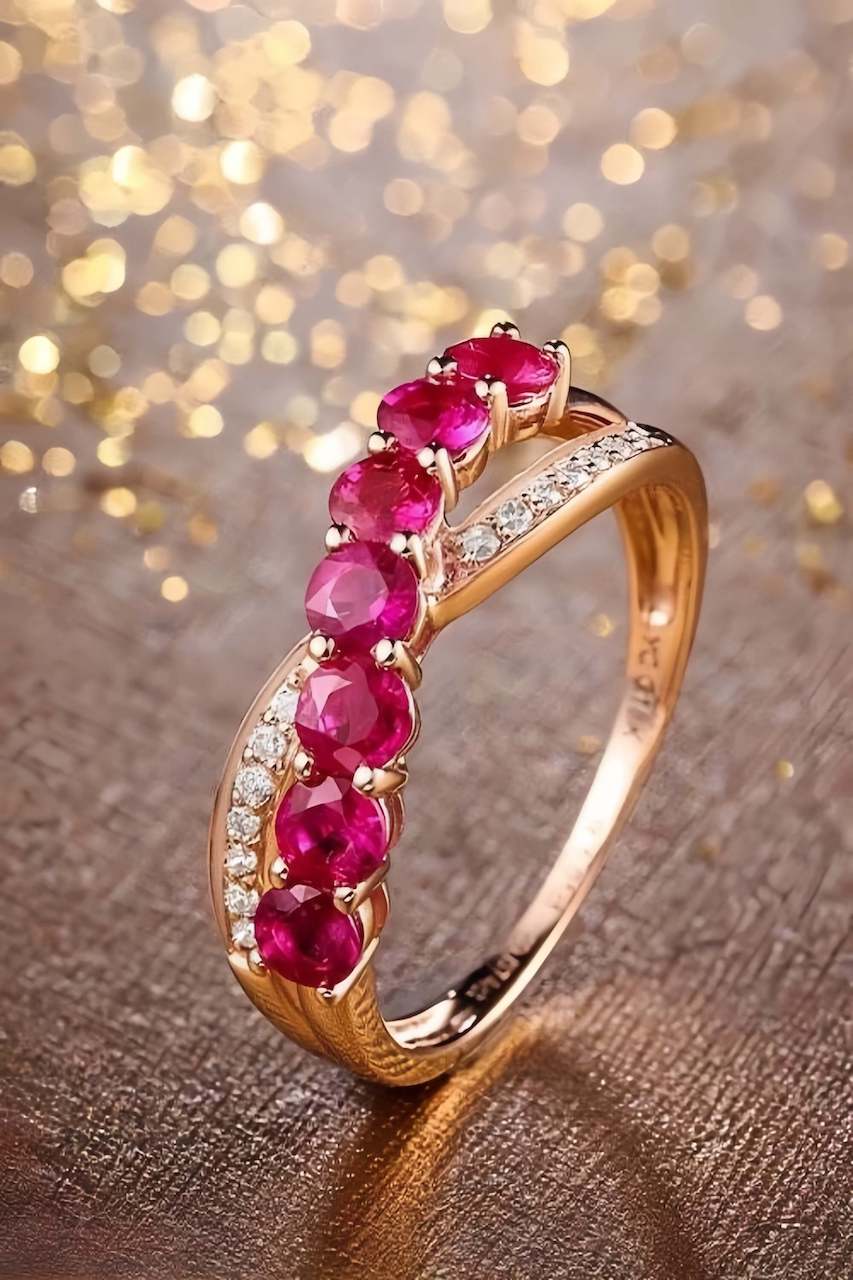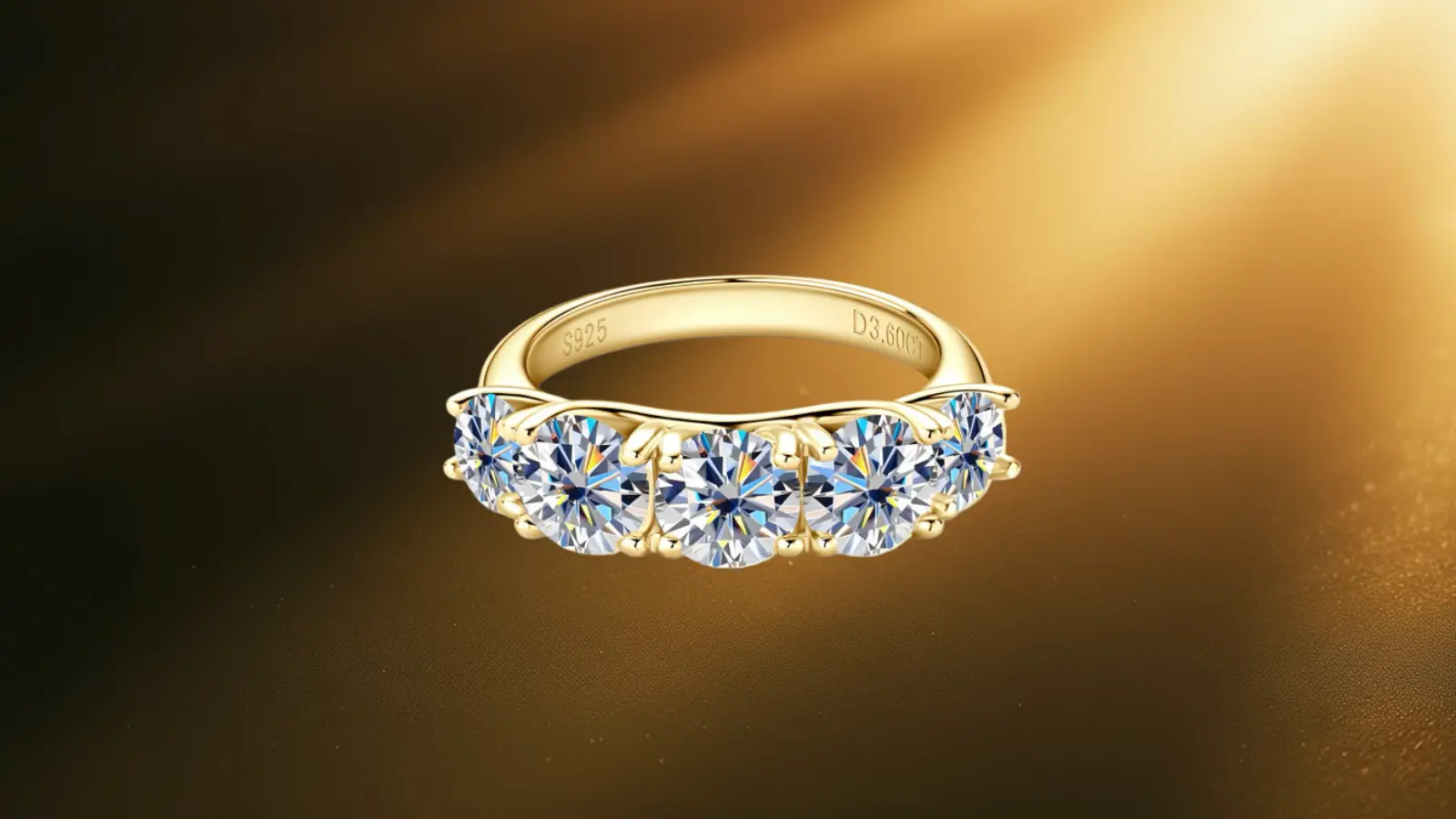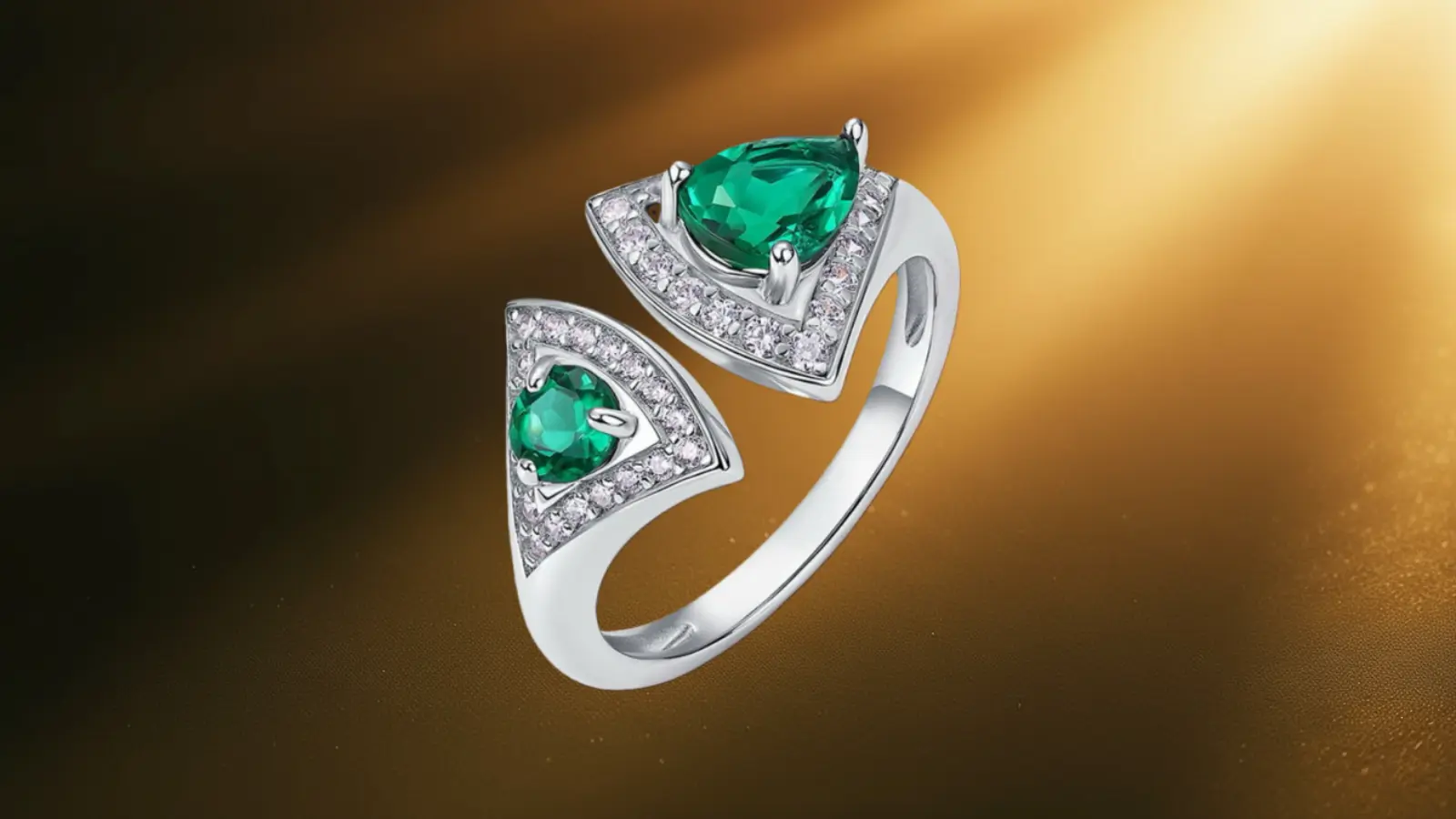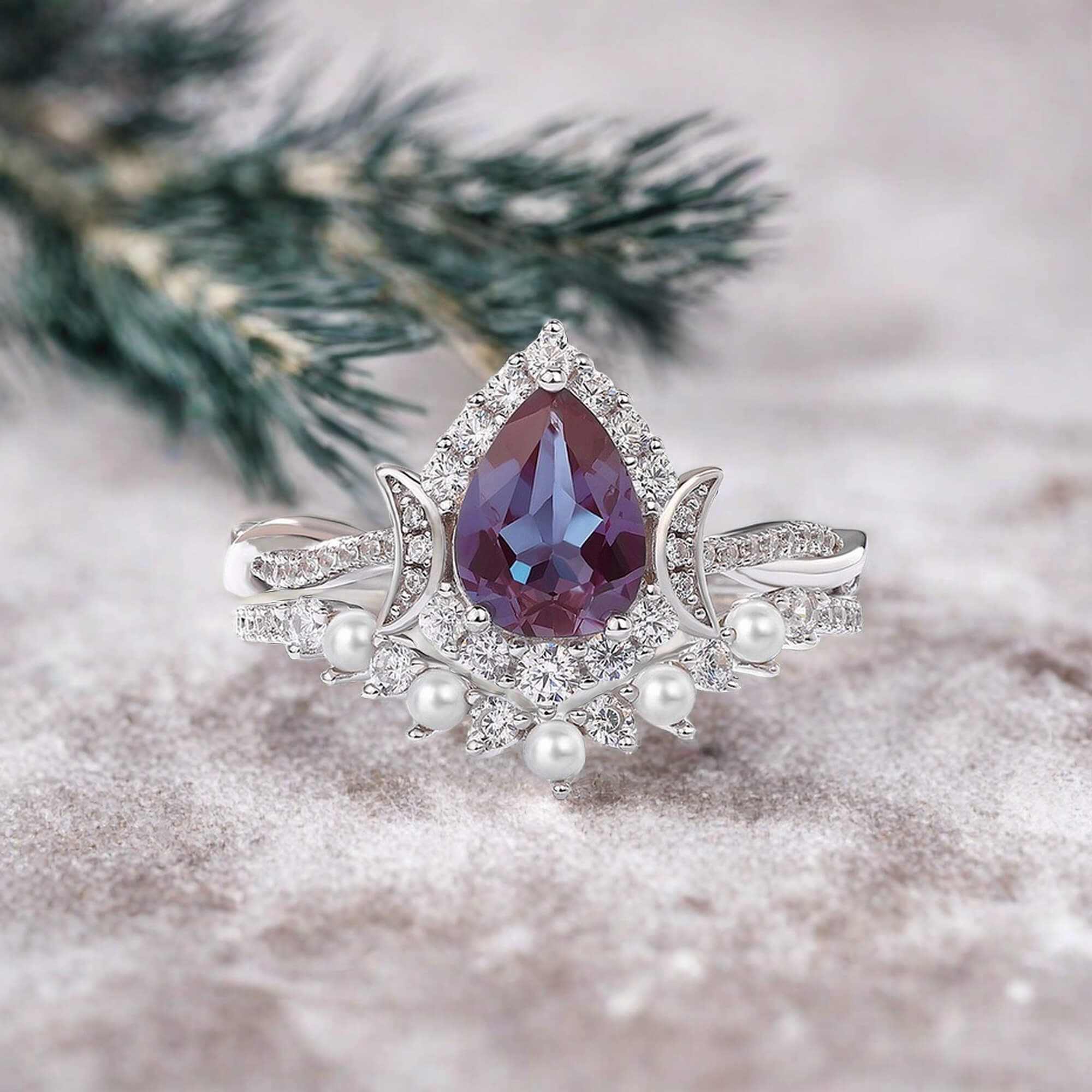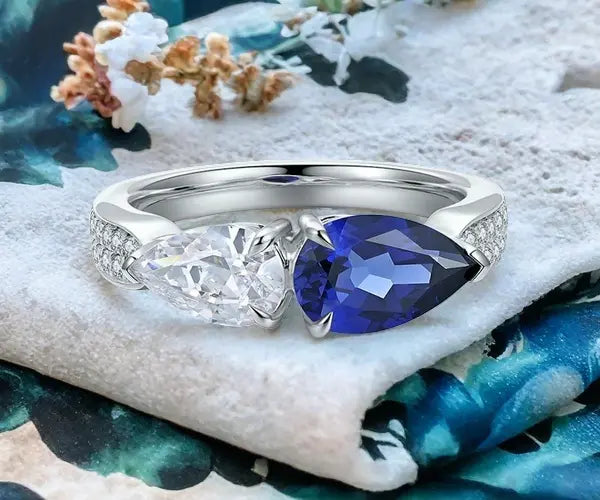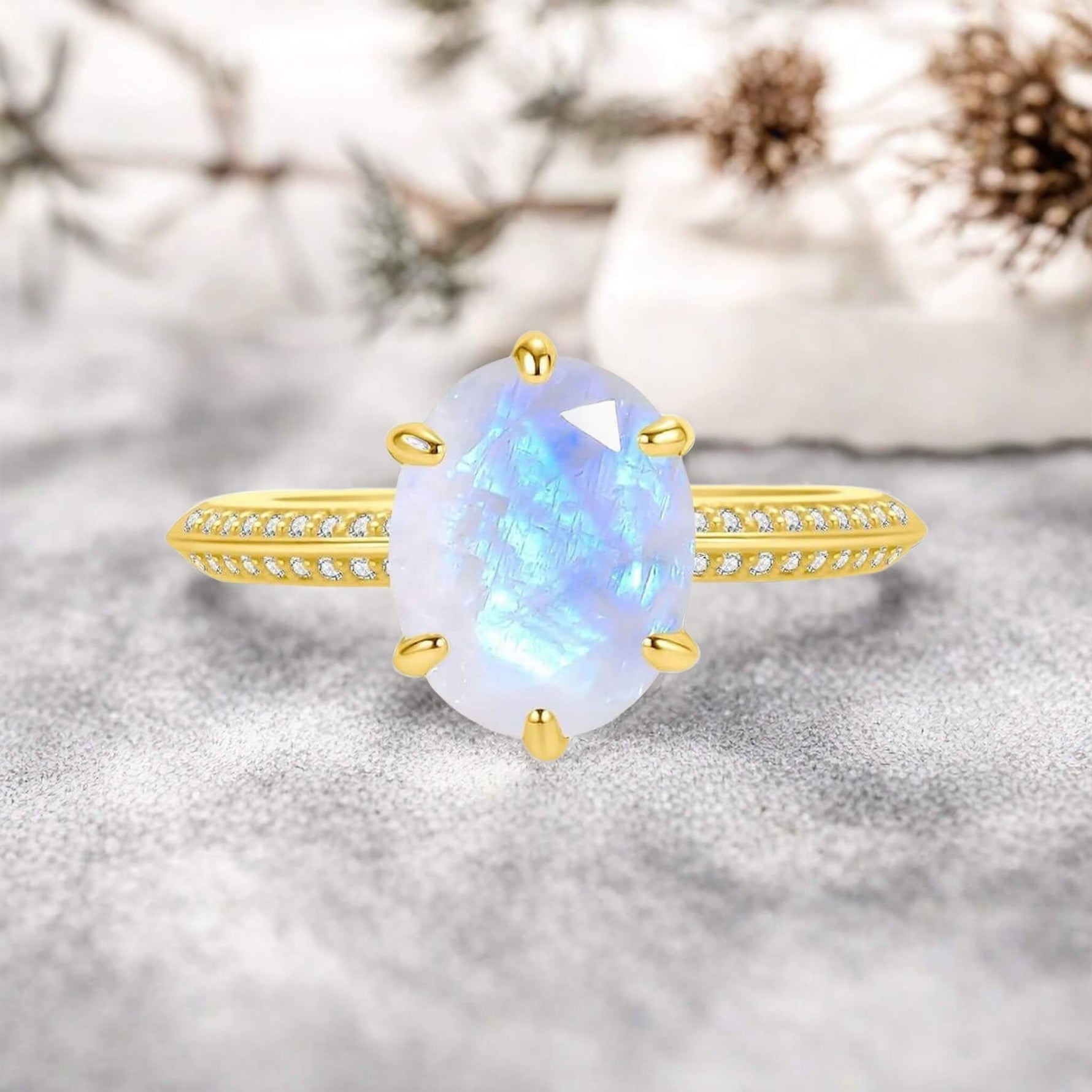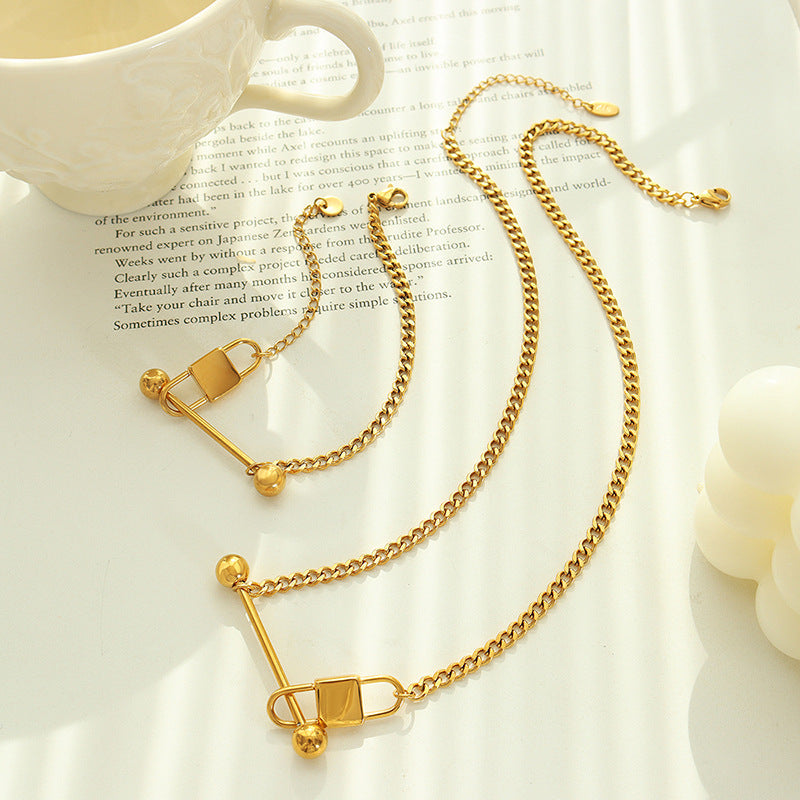Blue sapphire is a gemstone that has been loved for centuries. It is famous for its deep blue colour and strong durability, making it a great choice for rings and fine jewellery. It is also known for its meaning, which includes wisdom, loyalty, and commitment. Many people choose blue sapphire for engagement rings, wedding jewellery, and anniversary gifts because of these qualities.
This guide will help you understand everything you need to know before buying a blue sapphire. We will cover how to evaluate its quality, the different types available, and how to take care of your sapphire jewellery.
✨ 1. The Meaning and Symbolism of Blue Sapphire
Blue sapphire has long been a symbol of loyalty, truth, and commitment. Many believe that wearing a blue sapphire brings wisdom and clear thinking, helping with decision-making and emotional balance. It has been linked to spiritual energy, protection, and divine favour in many cultures.
-
Ancient beliefs: In the past, people thought blue sapphires could protect them from harm and bring good fortune.
-
Royalty and history: Kings, queens, and religious figures wore blue sapphires as a sign of power and divine connection.
-
September birthstone: If you were born in September, blue sapphire is your birthstone.
-
45th wedding anniversary: Blue sapphire is the traditional gift for a 45th anniversary, symbolising a relationship that is strong, wise, and lasting.
✨ 2. How to Choose a High-Quality Blue Sapphire
When choosing a blue sapphire, there are six key factors that determine its quality:
-
Colour
-
Transparency
-
Clarity
-
Fire (Brilliance and Light Reflection)
-
Cut
-
Carat Weight
Colour – The Most Important Factor
The colour of a sapphire is the most important aspect of its quality and value. It is judged by three things:

-
Hue: The main colour of the stone (should be a pure blue with minimal green or purple tones).
-
Saturation: How intense the blue colour is. High-quality sapphires have rich, deep blue shades.
-
Tone: Whether the colour is light or dark. The best sapphires have a good balance, not too light or too dark.
Types of Blue Sapphire Colours
-
Royal Blue: Deep, rich blue with high saturation (most valuable).

-
Cornflower Blue: A bright, medium blue that is highly sought after.

-
Light Blue: Softer, pastel tones that are less valuable.
-
Greenish Blue & Purplish Blue: These have visible secondary tones, which reduce their value.
A high-quality sapphire should have a pure, vivid blue that is evenly distributed across the stone.
Transparency – How Light Passes Through the Sapphire
Transparency affects a sapphire’s brightness and overall appearance. It is graded as:
-
Transparent – Light passes through easily; most valuable.
-
Semi-Transparent – Some light passes through but with visible inclusions.
-
Translucent – Cloudy appearance, lower quality.
-
Opaque – No light passes through; lowest quality.
The best sapphires are transparent to semi-transparent, as they allow more light to reflect.
Clarity – Are There Visible Inclusions?
Sapphires naturally have inclusions (small imperfections). Unlike diamonds, sapphire inclusions are not always a problem unless they are large or visible to the naked eye.
Clarity is usually graded as:
-
Flawless – No inclusions visible under magnification (extremely rare).
-
Very Slight Inclusions – Tiny inclusions visible at 10x magnification.
-
Slight Inclusions – Small inclusions visible under magnification but not to the naked eye.
-
Visible Inclusions – Inclusions noticeable to the naked eye, lowering value.
Some inclusions, like silk-like patterns, can enhance a sapphire’s glow. Kashmir sapphires are famous for this effect.
Fire – How a Sapphire Reflects Light
Fire refers to how a sapphire reflects light inside the stone, creating a sparkle effect.
-
Brightness: The stronger the reflection, the more brilliant the sapphire looks.
-
Surface Area: The larger the area reflecting light, the higher the quality.
Royal blue sapphires tend to have stronger fire, making them more visually appealing.
Cut – The Shape and Proportions of a Sapphire
A good cut improves the way a sapphire reflects light. Unlike diamonds, sapphires do not have strict cutting standards, but the best cuts ensure symmetry and balance.
Popular Blue Sapphire Cuts
-
Oval – Enhances colour and brilliance.
-
Cushion – Vintage look with soft edges.
-
Round – Classic shape, great for rings.
-
Emerald – Step-cut, elegant and sophisticated.
A well-cut sapphire balances depth, brightness, and overall weight.
Carat Weight – Does Size Matter?
Sapphires are denser than diamonds, so a 1-carat sapphire looks smaller than a 1-carat diamond.
-
Smaller stones (<1 carat) – More affordable, ideal for delicate designs.
-
Medium stones (1-3 carats) – Popular for engagement rings.
-
Large stones (5+ carats) – Rare and expensive.
While size affects price, colour and clarity matter more in determining value.
Final Buying Tips
-
Always buy from a reputable jeweller with certification.
-
Ask about any treatments the sapphire has undergone.
-
Choose colour over size if you want the best quality.
-
Check for a good cut to enhance the stone’s brilliance.
-
Ensure the sapphire is set securely in its jewellery piece.
✨ 3. Natural vs. Lab-Grown vs. Treated Sapphires
Natural Blue Sapphires
-
Mined from the earth, each stone is unique.
-
Found in Sri Lanka, Myanmar, and Madagascar.
-
The most valuable and rare.
-
May contain natural inclusions, which can sometimes enhance their appearance.
-
High-quality natural sapphires have well-balanced colour, transparency, and fire.
Lab-Grown Blue Sapphires
-
Created in a lab with the same chemical properties as natural sapphires.
-
More affordable and ethical.
-
Often free of inclusions, resulting in a highly transparent appearance.
-
Visually identical to natural sapphires but usually sold at a lower price.
Treated Blue Sapphires
-
Heat-Treated – The most common method, improves colour/clarity (widely accepted in the jewellery industry).
-
Diffusion-Treated – Colour is artificially added to the surface, making it less valuable.
-
Glass-Filled – Low-quality stones filled with lead glass to improve appearance, considered low-grade.
-
Dyed or Coated – Artificial enhancements that may fade over time, significantly reducing value.
Always ask for GIA certification to confirm a sapphire’s origin and treatment. It is important to understand the type of sapphire you are buying to ensure you get the best quality for your investment.
If you're considering a lab-grown blue sapphire, Minerva Jewelry offer an ethical and budget-friendly alternative.
✨ 4. How to Take Care of Your Blue Sapphire Jewelry
Blue sapphires are durable, but proper care is essential to maintain their beauty.
- Avoid harsh chemicals – Remove jewellery before using cleaning products or perfumes.
-
Clean with mild soap and water – Use warm water and a soft brush.
-
Store separately – Keep in a soft pouch to prevent scratches.
-
Check the setting regularly – Ensure the stone is secure in its setting.
By following these simple steps, your sapphire jewellery will remain stunning for years.
✨ 5. Conclusion
Blue sapphires are one of the most meaningful and stunning gemstones. Their deep blue colour, durability, and rich symbolism make them a perfect choice for fine jewellery. Whether set in a ring, necklace, or bracelet, a sapphire will remain a timeless piece that represents wisdom, loyalty, and strength.

